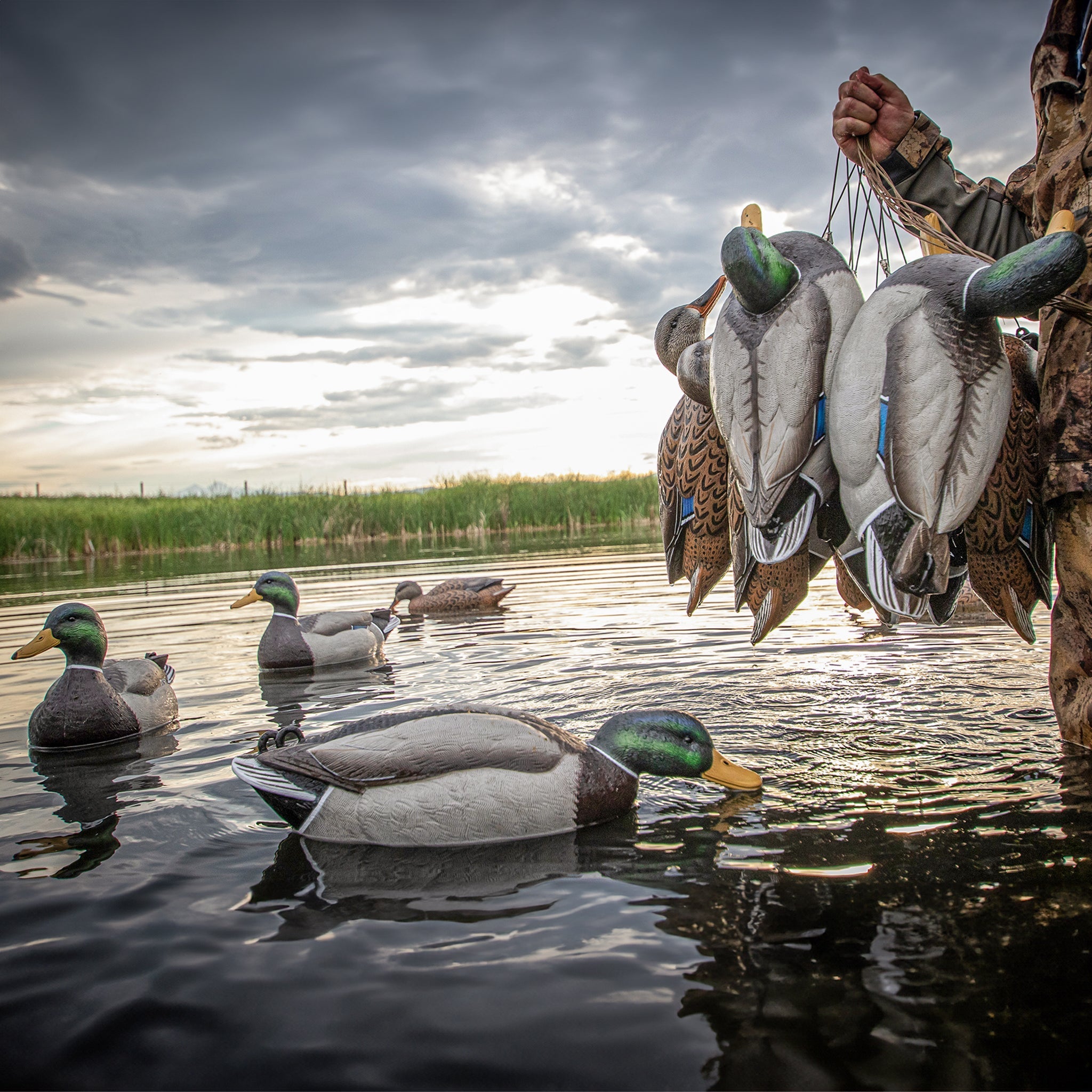This Teenager Is Developing a Video Game That Assesses Your Mental Health | Innovation
At one point last year, high schooler Rasha Alqahtani had finals coming up and 35 Zoom calls booked. To manage her busy schedule, she had duplicate calendars—one on Google Calendar, the other printed and placed behind her laptop, so that even a power outage wouldn’t derail her. The now-18-year-old from Riyadh, Saudi Arabia, had laser-like focus on an extracurricular passion project: Creating a video-game tool to help diagnose teenagers with generalized anxiety disorder.
Alqahtani’s ambitious proposal—inspired, in part, by personal experience with the stressors of the pandemic—won her a behavioral science award in this year’s Regeneron International Science and Engineering Fair, an annual competition for ninth through twelfth graders administered by the Society for Science in Washington, D.C. Her prototype aims to address the problems of stigma and inaccessibility that, psychologists say, present substantial roadblocks to teens getting mental health care.
Alqahtani began researching her prizewinning project last year as a participant in Mawhiba, a national STEM program for gifted-and-talented students in Saudi Arabia. Over Zoom, gesturing with hands laden with silver rings, Alqahtani recounts how she wanted to work toward something that would genuinely help people in her generation. (The desire to help is such a guiding principle that she repeats the word 41 more times during our conversation.) She’d seen anxiety affect the lives of people around her—a family member, a “genius” schoolmate who’d cry and hyperventilate with each test, strangers in TikTok confessionals. To some extent, she struggled with it herself, as “a straight-A student trying to keep perfection.”
“I tried to heal myself, by myself, almost all of the time,” she says. “In Saudi Arabia, we are starting now to connect the dots and to raise awareness about mental health. Going to a psychologist does still have a negative effect on a person in society.” A recent meta-analysis in the journal PLoS One backs up Alqahtani’s point; it found “limited” mental health literacy and negative public attitudes about mental health in Saudi Arabia and neighboring Gulf states.
Alqahtani resolved to do something about the anxiety she’d noticed around her, and the sense that taking the immediate step of going to a psychologist might daunt some teens. Research bore out her observations: The World Health Organization (WHO) reports that anxiety is in the top ten causes of teen illness and disability. And while at least half of mental health conditions, including anxiety disorders, begin during the teenage years, treatment happens—if it happens—much later. In the U.S., according to the Child Mind Institute, only one out of three young people dealing with generalized anxiety disorder (GAD) for the first time will seek treatment in that initial year.
Keith Herman, a co-director of the Missouri Prevention Science Institute and a professor in the University of Missouri’s Educational, School & Counseling Psychology department, defines GAD as a “generalized overall sense of dread and apprehension that interferes with an individual’s life.” Health providers make this diagnosis—the most common clinical anxiety diagnosis for both adolescents and adults—when an interview shows that someone has feelings of hard-to-control worry that surpass just “feeling anxious” in both intensity and persistence over time, occurring on a majority of days over a span of at least six months.
Fortunately for people with clinical anxiety, standard treatments like cognitive behavioral therapy and medication have been demonstrated, scientifically, to make a difference in their lives. “That’s one of the biggest frustrations and concerns,” says Herman. “Even though we have these effective treatments, less than half of youths [experiencing various mental health disorders] will access treatments.”
The Covid-19 pandemic has only exacerbated mental health concerns among adolescents across the globe. In the U.S., for instance, the number of teen mental health insurance claims filed in March and April 2020 was twice that of the previous year. And as students return to school, the National Association of School Psychologists reports an unsettling shortage of mental health resources. The current U.S. ratio is one psychologist for every 1,211 students, when the recommended ratio is 1:500.
Alqahtani believes getting a diagnosis is a crucial step for mental health: “Acknowledging that, ‘Oh, I have this thing. I’m going to accept having this thing. Now I will work on it…It’s not going to be something that will hold me back.’” She also loves playing “Minecraft.” “I would just tear up to live in ‘Minecraft’ for a day. I really love it,” she says. So as the pandemic made her and so many others feel anxious, she proposed a research project for a Mawhiba program that would use the familiar, fun format of a video game to evaluate players for GAD.
Alqahtani put together a first draft of her test in two weeks. Rather than the daunting task of building a full-blown game from scratch, Alqahtani set her sights on what she calls a “feature,” a module that users would access within a preexisting video game. For the purposes of the prototype, she didn’t actually code the feature but instead produced a video simulation of what it would look like within the game of “Minecraft.” Alqahtani drew on one of her hobbies—she makes short films—and created a video that looked like “Minecraft: Story Mode,” in which players choose their own adventures by indicating how they’d like to respond to various scenarios.
In Alqahtani’s version, instead of deciding which character to save from a monstrous enemy, users choose how they’d react in different, potentially anxiety provoking scenarios. In one instance, a friend says “Don’t bring your pet [a pig that’s a character in original “Minecraft: Story Mode”] to the party. People will call us losers.” The player selects one of two options: “I’m not worried about them, we will have fun!” and “Oh! That will be so embarrassing and terrifying. I’m leaving my pet, but I’m afraid he will hurt himself.” In scoring the assessment, the latter option would be assigned a value of one point. A higher score, after completing 13 of these questions, should indicate higher anxiety levels.
To develop the different scenarios, Alqahtani adapted a psychometric from the 1950s, the Taylor Manifest Anxiety Scale, the first internationally utilized measurement of someone’s tendency towards anxiousness. (Higher baseline levels of anxiousness, or “trait anxiety,” which is similar to what the TMAS quantifies, tend to coincide with certain anxiety disorders like GAD, but the two are not the same.) While it has faded from popular use, Alqahtani chose the TMAS because it was readily accessible on the internet and, unlike many other tests, didn’t require a fee or license to use. She found the stilted true/false statements of the TMAS—like “At times I am so restless that I cannot sit in a chair for very long”—hard to conceptualize, so she adapted them into “Minecraft” scenarios. She surveyed more than 500 peers about their willingness to get a psychological assessment online, then guided 35 female participants through the game demo on Zoom and logged their answers. Ultimately, her analysis showed that the video-game-scenario results corresponded with those of the actual TMAS; people’s scores on one measure resembled their scores on the other.
(Rasha Alqahtani)
The judging for the Regeneron International Science and Engineering Fair fell squarely during Ramadan, so the Saudi Arabian delegation participated late at night, after they’d broken their fasts. And despite the fact that ISEF was a prestigious competition with as much as $75,000 on the line, Alqahtani says she wasn’t there for the glory: “I just said, ‘God, please, I’m doing this for the purpose of helping others. And I do not care if I win; I care if this will reach more people.’”
Alqahtani gave strict orders to her professor father, poet mother, and four of her eight siblings to wait outside the room during the virtual awards announcements. If they heard screams of celebration, they could “burst into the room and just kill me with happiness,” she instructed. They did exactly that when she was named a third-award winner in the behavioral science division, an international accolade that came with a $1,000 prize. Her friends send a screenshot of her face-in-hands reaction to her regularly.
“It’s kind of life-changing,” she says now. “You see that when you work this hard, people…give you the appreciation you deserve.”
Renae Beaumont, an assistant professor of psychology at Cornell University’s medical school and a member of the Society of Clinical Child and Adolescent Psychology, finds Alqahtani’s prototype impressive. “This is incredible for a student project,” she says. “I totally acknowledge and celebrate her for recognizing that ‘This is a big problem, and we need to come up with technologically innovative solutions. And I want to do it in an engaging and accessible way.’”
The “gold-standard” way of getting a diagnosis, Beaumont and other psychologists acknowledge, isn’t exactly user-friendly. Beyond the financial barriers (especially prevalent in the U.S.) and the logistical difficulty of finding a provider and then scheduling an appointment, teens often have to enlist a parent—who might have a negative outlook on their child seeking out mental relief.
Alqahtani herself has encountered some of these stumbling blocks. She remembers how, late at night and in the thick of her research project, she felt depressed, anxious and on the brink of tears, so she searched for online therapy. Three virtual sessions, she found, would cost $273, absolutely out of her teenage budget.
After making an appointment, clients typically go through a lengthy interview Beaumont describes as sometimes “borderline uncomfortable” to arrive at a formal diagnosis.
Video games, by contrast, offer familiarity and fun. “It’s often a very non-threatening space, because games are inherently a play space,” says Kelli Dunlap, a clinical psychologist and adjunct professor of game design at American University who helms the mental health interest group of the International Game Developers Association. Roughly nine out of ten American teens play video games, and “Minecraft” in particular is “incredibly popular,” says Dunlap. When asked personal questions or confronted with a scenario in a game, “It may frame these questions that are often very clinical and very cold in a way that is more relatable and maybe even more understandable to someone in that age group,” she says.
Promising as psychological tools delivered by Xbox might be, there are drawbacks too. Beaumont and Dunlap questioned the feasibility of handing down a full-blown diagnosis via only an online questionnaire, pointing out the depth of information gathering done by providers, who must be licensed in order to provide a medical diagnosis. “These diagnostic tools [like the Multidimensional Anxiety Scale for Children] that we use right now—a lot of time, energy, money has gone into creating reliable, valid tools,” explains Beaumont, including testing them in randomly selected groups in various cultures and conducting focus groups and interviews about word choice and phrasing to make sure the questions are easy to parse.
A screener, which doesn’t provide an ironclad diagnosis but could tell participants that the tendencies they’ve reported fall into an unusual anxiety range, would be a more easily attainable target, suggests Dunlap. Anxiety falls along a continuum, Herman, the school psychology professor, says, and even a score that might not suggest full-blown GAD is worth flagging so someone can take steps to quell their anxiety.
Both Dunlap and Beaumont suggest that Alqahtani, in further developing her tool, should turn to a more updated screen than the TMAS, ideally one, like RCADS or SCARED, reliable across countries and cultures, and then test the game “mod” on a larger, randomized and more diverse sample of teenagers to gather stronger proof that the video-game assessment performed on par with a preexisting tool.
Both video-game psychology experts imagined the assessment as a jumping-off point for teens to access other resources. “If you create this amazing screener that helps identify teens who are at risk of having a diagnosed mental health condition or an anxiety disorder, then you need to be providing a gateway to different treatment options that are accessible and engaging as well,” says Beaumont.
Alqahtani’s innovative test could become part of the cutting-edge field of digital therapeutics operating at the intersection of psychology and technology. In the U.S., the FDA has approved two technology-based tools for mental health: a game to treat ADHD in children between the ages of 8 and 12 years old and an app that can help diagnose young children with autism spectrum disorder. Soon, Beaumont hopes, there’ll be more, since the field has taken off in the past few years. In 2020, the FDA formed the Digital Health Center for Excellence to concentrate on digital health technology and innovation.
“Making a game is probably one of the hardest things you can do,” says Dunlap. From finding funding to coding to keeping users engaged, “There are soooo many challenges,” Beaumont says, “but it’s totally worth it.” She’s in a position to know.
“Secret Agent Society,” a game that helps neurodivergent children learn to socially connect, began as Beaumont’s doctoral project a decade ago; today, over 20,000 families have used the tool. And other mental-health video games have come together without marshalling Nintendo-level resources, like “Fractured Minds,” an award-winning game about mental health challenges created by British teenager Emily Mitchell.
“I don’t think it’s an easy solution,” Beaumont says of a game-based anxiety screener. “It’s one that has great promise; I think it’s doable.”
Consider the challenge accepted. Alqahtani’s earnestness when she talks over Zoom about her research is palpable from 6,700 miles away. She got special permission to enroll in an intensive, government-sponsored game-creation camp this summer, which overlaps with the beginning of her first year of college. At King Saud University, her first-choice school, she intends to major in software or biomedical engineering. She plans to add multiple different metrics of anxiety to her game feature to make its assessment more complete and is eager to find collaborators to propel the project forward.
Alqahtani explains that her Muslim faith holds that every sickness has a cure created by God, even if we haven’t found it yet. She wants to help in that healing. The past year of late nights and footnotes and virtual science fairs, she says, “has been a great, rough, beautiful, happy-sad journey, but I wouldn’t do anything to change it.”
For more resources on anxiety, visit the Anxiety & Depression Association of America’s website. In the U.S., you can reach the Crisis Text Line by texting HELLO to 741741, and a list of international mental health hotlines can be found here. One expert-recommended behavioral health treatment locator tool (in the U.S.) is at findtreatment.samhsa.gov.








